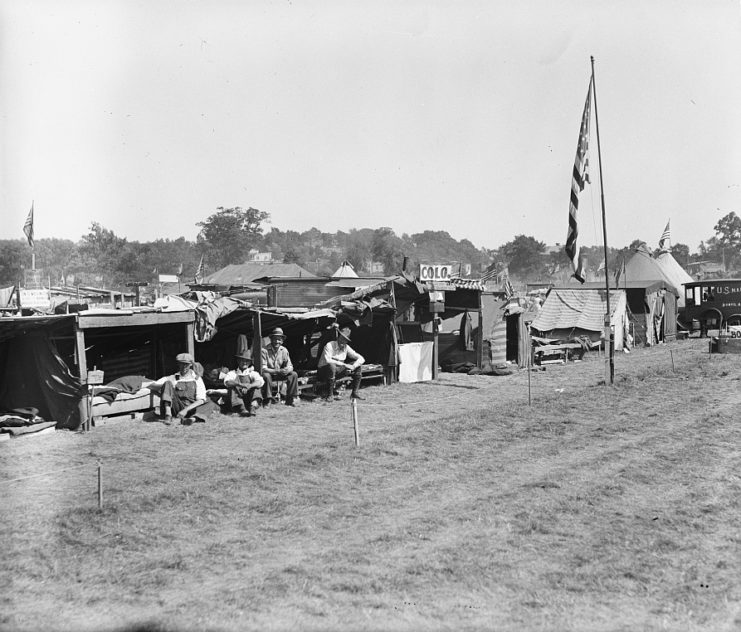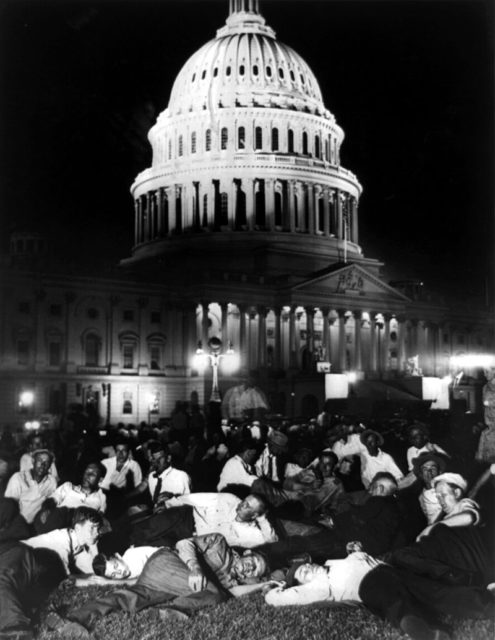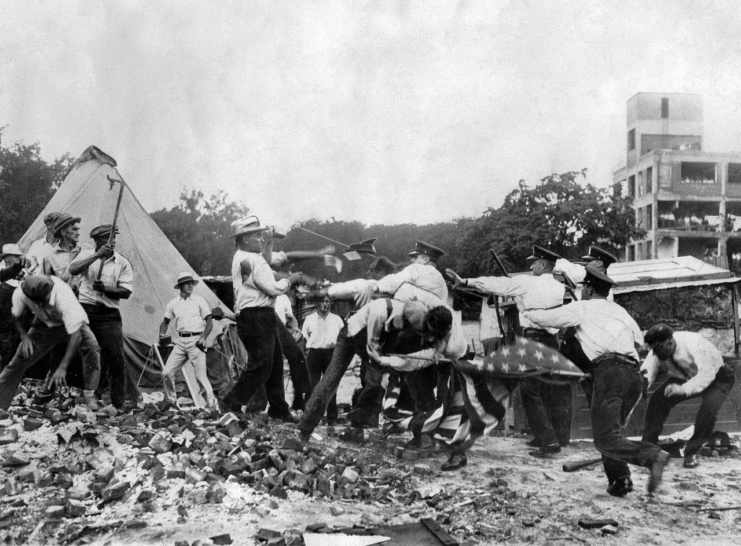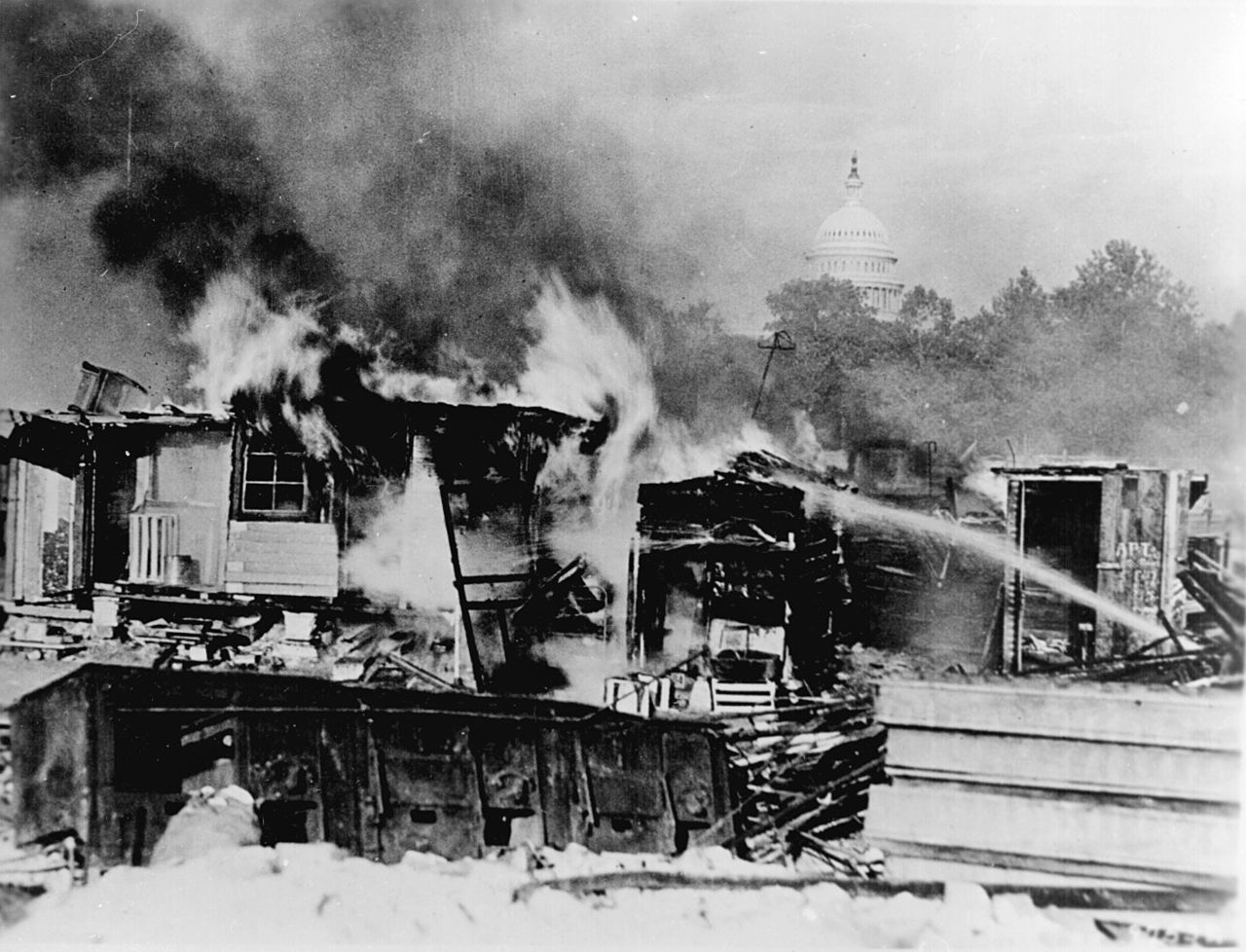In 1932, 43,000 demonstrators made their way to the US Capitol to demand early access to service bonus certificates. The demonstration was carried out by WWI veterans, of which around 17,000 were in attendance, and had brought their wives and children with them. The veterans were unemployed due to the Great Depression but were unable to redeem their WWI bonuses until 1945. The demonstration semi-unsuccessfully demanded immediate access to these bonuses.
Named the “Bonus Expeditionary Force” as a nod to the US American Expeditionary Force that fought in WWI, the protestors would eventually clash with US authorities, resulting in the deaths of two veterans.
US military bonuses

US Servicemembers have been given bonuses for their wartime experience since the 1700s as a means to ensure veterans received fair payment for leaving civilian life behind. This legislation was inspired by similar English customs that guaranteed maintenance for disabled veterans and gave bonuses to active soldiers.
These bonuses for veterans and soldiers were significantly less generous than those given out in England, resulting in veterans marching for improvements in this system in the late 1700s. While the protests would be quashed, the US government slowly passed more accommodating legislation regarding pensions and bonuses. By the 1830s, even widows were able to benefit from these pensions.
Up until the late 1800s, land and money were given as payments to soldiers after a conflict had ended. The amount given to veterans was mostly decided by rank. For example, a private would be given $80 dollars (around $2,000 today) and 100 acres of land (even for cheaper areas in the US, this could be worth up to half a million dollars today).
73,500,000 acres of land had been given to veterans by 1860, and continuing this form of payment was becoming a problem, so the US government removed land as a bonus payment. As a result, only money would be given from then on.
The Bonus Army

Despite the provisions in place to support soldiers from previous wars, WWI veterans did not receive such bonuses. This prompted veterans’ organizations to pressure the US government to give veterans compensation for their WWI service. In 1924, the government gave in, passing the World War Adjusted Compensation Act into federal law. This would see each veteran receive up to $500 (equivalent to about $8,000 today) for serving during WWI in the US or up to $625 (equivalent to about $9,500 today) for serving overseas
Smaller amounts were paid upfront, but for any other amounts, the bonus could only be redeemed after 20 years. A certain amount of their bonus could be borrowed before its due date.
By the start of the 1930s, the US was in the grips of the Great Depression, and many people, including veterans, were out of work. Needing money, a large number of veterans demanded that the government release their bonuses, but they refused, instead only increasing the amount that could be borrowed.
In response, tens of thousands of veterans and their families marched to Washington D.C. to demonstrate. They set up camp in a “Hooverville” near Capitol Hill, constructed from materials from a nearby junk heap. Although it may have had a crude appearance, the camp was strictly managed, with streets and sanitation facilities.
Virtually all of the veterans were well behaved, cooperating with the Superintendent of the D.C. Police, Pelham D. Glassford to keep the camp under control.
Unfortunately, the peace would not last for long.
Conflict

Under pressure from the government, Glassford was ordered to clear out the town. Glassford had wanted to allow the veterans to disperse in their own time to prevent violence. Following orders, he forced the demonstrators out of the camp. However, once they began returning, D.C. police began firing at the crowd, killing two veterans.
After the killings, the US Army was brought in, under the control of General Douglas MacArthur.
The Army, with the assistance of six tanks led by General George S. Patton, arrived to remove the demonstrators. Initially, the Bonus Army thought the military had shown up in support of their cause, but this wasn’t the case.
The troops fired tear gas into the camp and rushed in, evicting all of the veterans and their families. The attack injured 55 veterans and tragically caused a miscarriage. A further 135 were arrested.
After the vicious attack, the government still did not budge on releasing the veterans’ bonuses early, and none of the reputations of the high-ranking military officials involved were damaged.
A second demonstration occurred in 1933, at which point Franklin D. Roosevelt was now the US president. Instead of attacking the demonstrators, he offered them work in the Civilian Conservation Corps, dramatically diffusing the situation.
Regardless, in 1936 the Adjusted Compensation Payment Act was passed, finally granting veterans the money they so desperately needed.
